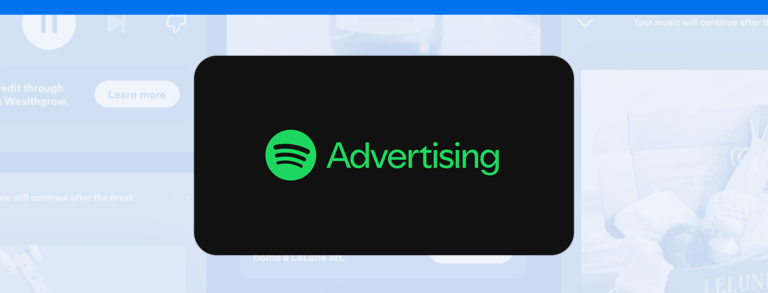Are you running your campaigns on a budget? Maximize Your Google Ads ROI with These Budget-Friendly Strategies
When diving into the world of Google Ads, it’s common for businesses to start with a modest budget, gradually increasing it based on the returns they receive.
But here’s the burning question: Can you still achieve remarkable results with a lower investment? And how can you make your ads stand out from the competition and deliver exceptional performance?
While budgets do play a significant role in the success of your paid media campaigns, fear not! There are practical strategies to leverage Google’s resources and generate a stellar Return on Advertising Investment (ROAS), even working within financial constraints.
In this comprehensive guide, we’ve carefully handpicked eight invaluable tips that will turbocharge your strategy and help you excel, even on a limited budget. Don’t miss out on these insider secrets—read on and take your Google Ads game to new heights!
The Science Behind Setting Google Ads Budgets
When it comes to Google Ads, understanding how budgets are determined is crucial. Let’s dive into the two recommended methods for setting budgets:
- Expert Mode: In this mode, you define a daily budget for each campaign based on your advertising goals and desired daily expenditure. The beauty of this approach is that it gives you the flexibility to review and make edits whenever you please, ensuring optimal control over your spending.
- Smart Mode: Alternatively, in smart mode, your ad budget is set on a monthly basis, taking into account not only your goals but also the total amount you’re willing to invest. This intelligent approach aligns your budget with your overarching objectives, optimizing your ad spend for maximum impact.
Remember, payment is tied to specific user actions, such as link clicks or conversions. By strategically investing in campaigns, you increase your chances of maximizing returns.
However, it’s essential to note that while Google leaves you free to configure budgets, they recommend a minimum of BRL 20.00 per day (equivalent to an average of BRL 600.00 per month) for a solid positioning. While it’s not mandatory, adhering to this guideline can help you take those crucial initial steps in the channel.
8 tips for creating effective campaigns on a limited budget
Now that you know about setting campaign budgets in Google Ads, it’s time to delve into our expert tips for achieving stellar results—even on a limited budget.
Here’s the thing: Account success goes far beyond the mere dollars invested. It hinges on a multitude of factors, including campaign type, meticulous keyword planning, precise targeting, and so much more. Stay ahead of the game:
1. Invest in the Search Network
When it comes to Google Ads campaigns, there’s no denying the allure of the Search Network. It’s an immensely popular format with lots of potential. Why? Because it allows you to showcase your ads to individuals actively seeking solutions to their problems, whether a product or a service.
Using the Search Network significantly increases your chances of driving conversions. Of course, this requires strategic keyword selection and creating compelling ads that resonate with your target audience.
Now, don’t get us wrong—you shouldn’t disregard other campaign formats entirely. However, depending on your total budget, it’s wise to start with the Search Network as your foundation and then gradually expand into other models.
2. Plan your keywords strategically
When it comes to achieving impactful results, search terms play a pivotal role. The keywords you select can make all the difference in driving a remarkable return on your investment.
To ensure your keyword game is on point, you’ll need to leverage a reliable keyword planner. This invaluable tool allows you to assess the relationship between search volume, the average cost per click (CPC), and paid difficulty (indicating the approximate level of competition). Armed with these insights, you can handpick the most relevant and powerful keyword options for your business.
For instance, it’s important to note that broader keywords typically boast higher search volume but also come with increased competition, making it more challenging to secure a top spot on Google’s search results. On the other hand, specific terms offer greater efficiency in reaching potential customers, ensuring you connect with the most relevant audience.
3. Opt for Manual Bidding
Setting manual bids can also be a good way out for those on a limited budget. With this feature, you can set the threshold for each bid, which will not be exceeded in the Google auction.
You can also change this value in each campaign, increasing bids to increase your competition for words with high search volume.
4. Find the Right Balance with Ad Groups
If you’re looking to supercharge your Google Ads campaigns, it’s crucial to adopt a strategic mindset when crafting your ad groups. After all, the allocated budget will be distributed among these groups and even among the selected keywords.
Here’s the deal: The more you splinter your campaigns with an excessive number of groups and terms, the more challenging it becomes to optimize your spending, especially when working with a limited budget.
But that’s not all—there’s another secret weapon to wield: negative keywords. Don’t overlook the significance of listing negative keywords for each campaign. This powerful tactic helps prevent unnecessary spending on search terms that are irrelevant or potentially detrimental to your ads’ performance.
5. Precise Audience Targeting
And just as you should avoid keywords that are too broad, the same goes for your targeting approach. To optimize your campaigns, it’s essential to be precise when setting up the locations you want to reach and defining your audience’s profile along with their pain points.
Even if your business caters to the entire country, such as an e-commerce venture, focusing on locations that yield the most sales initially can accelerate your return on investment.
Additionally, employing a robust remarketing strategy can work wonders. This technique aims to reconnect with individuals who have previously engaged with your company’s website, increasing the likelihood of conversion and lowering the cost per conversion.
6. Strategically Schedule Your Announcements
To elevate your spending strategy, an invaluable resource is scheduling specific days and times to run your ads. This feature allows you to avoid displaying your creatives during periods of low demand and instead concentrate your budget on the most opportune moments for driving conversions.
If you’re unsure about the ideal days or times for your campaigns, fear not! Google Ads has you covered. Within the platform, you can access insightful information that reveals the best periods and times of day to maximize your ad performance.
7. Craft Captivating and Informative Creatives
When creating ads, a captivating copy that conveys your message succinctly goes a long way. Focus on providing objective information about your products or services and ensuring your messaging resonates with your target audience.
Make sure your creatives are highly relevant by incorporating top keywords, leveraging Google Ads Extensions, and landing pages that cater to the pain points and needs of your target persona.
8. Monitor results and budgets
No discussion on Google Ads’ success would be complete without emphasizing the importance of analyzing results and reviewing budgets regularly.
The beauty of online advertising lies in the ease of obtaining performance metrics, which can be leveraged to extract valuable insights and drive campaign improvements.
Within the Google Ads platform, you can monitor performance data to some extent. However, to supercharge your strategic decision-making and agility, you can harness the power of Google Ads reports and dashboards in Reportei.
This dynamic tool provides you with not only access to key metrics but also delivers specific results for each campaign, ad group, and keyword.
But that’s not all! Our game-changing Indicator Control feature lets you closely monitor your campaign spending and ensure you never exceed your monthly budget.
By setting a cost target, you’ll receive timely alerts when you’re reaching or deviating from your goals empowering you to maintain control and make agile decisions that maximize your return on investment.
Why wait? Seize the opportunity today to embark on a 3-day free trial of our reporting tool and witness firsthand how Reportei can revolutionize your digital marketing strategies.





